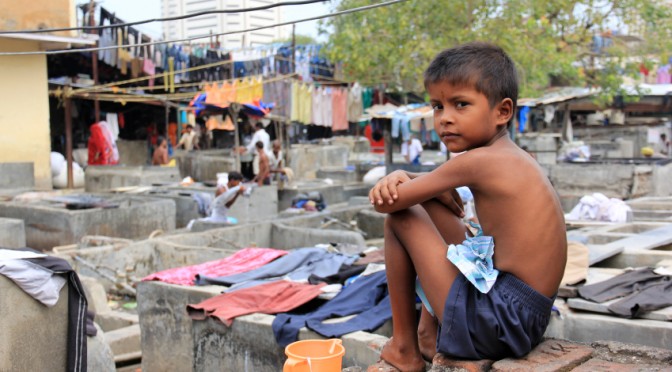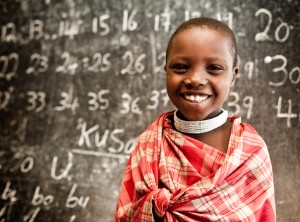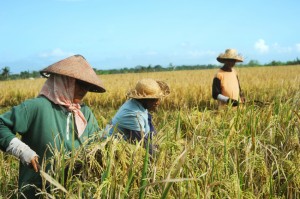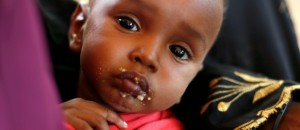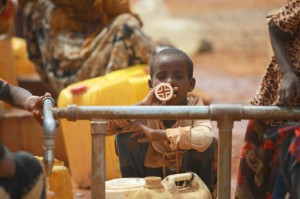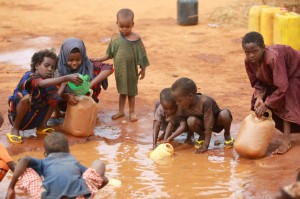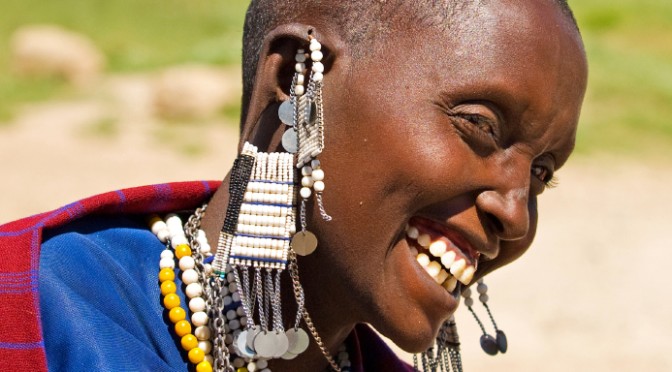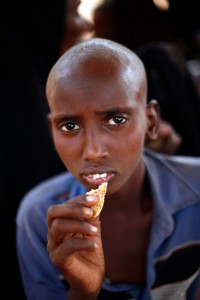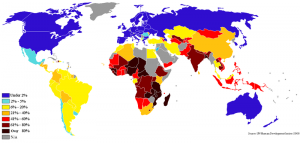WHAT DO WE MEAN BY POVERTY GAP?
Our world of 7 billion+ people is an unequal place. ‘Beauty’ is unequally distributed. ‘Intelligence’ is unequally distributed. Height is unequally distributed. Genetic advantages are unequally distributed. Against that uneven backdrop, is it any great wonder that something as volatile as ‘wealth‘ is also unequally distributed? In fact, are not all those other biological factors a form of wealth in their own right? We would contend that they are certainly of value. Why then this selective focus on purely material measures?
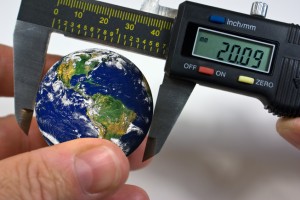
But let’s not debate the origins, or significance of that right now. For the sake of argument, let’s just accept it as a given, that we are considering material wealth ONLY and that DIFFERENCES in material wealth between people really matter – and that’s why the GAP between them matters. For convenience, let us also use the simple term ‘wealth’ to cover both a person’s accumulated assets AND their annual income from all sources. This saves us having to find an alternative to the rather useful (but somewhat misleading) GDP per capita data, traditionally used to measure wealth between people from around the world and from different periods of history. Agreed?

CAN WE AT LEAST AGREE DIFFERENCE IS A BAD THING?
Er, that could be tricky. Reading current literature on the subject seems to indicate that there is a ‘gap’ between ‘rich’ and ‘poor’ – and it’s getting wider. Let’s assume that analysis is correct. Instead of our own consolidated ‘wealth’ figure, we guess they are referring more to GDP/capita figures. Apart from maybe the top few thousand or so most-scrutinized individuals on the planet, we suspect that nobody has a detailed picture of what individual asset wealth really looks like across a country, let alone across the world’s population. So we are all working with averaged figures, sourced from various Government and/or UN statistics.
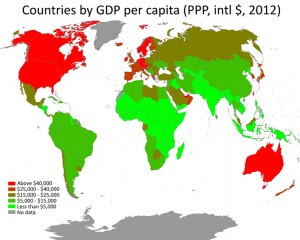
The analysis seems to suggest that there has long been a gap between the ‘wealth’ of the richest X% and the poorest Y%. No great surprise there, as we recognise that there is bound to be SOME difference, driven by all sorts of valid factors: amount of hours worked, amount of skill required, amount of risk involved, shrewdness of investment decisions, variable regional house price inflation and so on. In which case, the current heat of this ‘hot issue’ seems to be that this ‘gap’ is getting wider.
In summary then, difference itself is “acceptable”, but the AMOUNT of difference, or INCREASE in the difference perhaps IS NOT.

WHAT WOULD THE ‘RIGHT’ AMOUNT LOOK LIKE?
Nobody can credibly say, with any authority, what amount of difference is acceptable. Perhaps a reasonable best guess, removing approved variable factors, would be a ‘wealth’ distribution profile that looked rather like the ‘Normal Distribution Curve’. This curve is found again and again in the spread of values in nature.
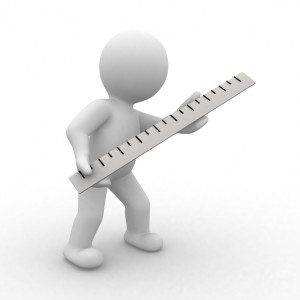
You can take height, for example. If you plotted the exact height of all adult males (18+) in a given country, you would find that the spread of values followed an approximation to the Normal Distribution Curve of values, from the shortest to the tallest. While all sorts of variations can and will occur BETWEEN countries – from the lowest and highest values, to the values of the quartiles, means and medians – the shape of the curve itself will prove remarkably consistent. So we should not be surprised if ‘wealth’ follows a similar pattern.

SIMILAR, BUT DIFFERENT?
The way in which ‘wealth’ is distinctively different, is the RANGE in the spread of possible values. You will NOT find any person over 3 metres tall – and certainly not over 100 metres tall! Nor will you find a person zero metres tall – which is the notional equivalent of a person with no ‘wealth’. So with height differences, we would be surprised to find the tallest person being more than, say TWICE the average for the population. Some might understandably look at that scale of difference in the NATURAL world, compare it to the degree of difference in the world of ‘wealth‘ and conclude that the sheer scale of ‘wealth’ differences are by direct implication, unnatural – and thus IMMORAL.

TWO SIMILAR ‘NATURAL’ EXTREMES
However, consider TWO counter arguments. First, consider how far a typical national adult population RUNS in the course of a year, on average. For the vast majority of the adult population in the developed world, the average for the year is unlikely to exceed much more than a few miles. Compare that ‘natural’ average to those who train for and run ultra-marathons. They are still human (we think), yet their average miles RUN in the course of the year will be hundreds – maybe even thousands of times the average for the rest of the population.

Secondly, consider gamblers. How many BIG WINNERS do you usually hear about? In Europe, we have the Euro Millions lottery, that just about ANYONE over 18 can enter. Every ticket supposedly stands an EQUAL chance of winning. All completely fair then, right? If you want to INCREASE your chance of winning, you just have to gamble more and buy more tickets. In the UK, there have been a few winners who made over US$100 million. Imagine that! Compare that to what the ‘average‘ person typically wins each year. Statistically, for the vast majority it will work out to be slightly less than they have spent on tickets in that same year. In some cases, it could be a LOT less. That’s how gambling works. You will find similar stories in Las Vegas. There WILL be the lucky few who make millions – sometimes even maybe hundreds of millions. The global Stock Markets are the same. If it was that predictable, we would ALL be making money at it. But it isn’t, so we don’t. Agreed?

WEALTH, EFFORT, RISK AND REWARD
Running your own business is a little more tricky to call. There are more things you can do to try to MAKE things go well, but you could still make one bad decision after 99 good ones – and end up going bankrupt. You may not notice ‘those’ business people so much. The ones who ‘fail’ in this way often have a tendency to take themselves out of the game. Once you have suffered a major financial setback, it is harder to find the financial and emotional capital, to enable you to try it all again – pitting yourself once more against the tough commercial competition out there. Some people just don’t have it in them. Nevertheless, many DO succeed – and a few succeed quite spectacularly. Yet even then, it never stops being something of a gamble. These then, are the ‘luckier‘ ones who top the scales at the upper end of our ‘wealth’ chart.

Because ‘wealth’ creation typically involves both elements of ‘effort‘ (like our ultra-marathon runners) and ‘risk‘ (like our gamblers), we should not be so surprised that there are such significant VARIATIONS in the spread of ‘wealth’ values at the top end. Similarly, as there is nothing to stop human beings making ‘bad’ decisions with their ‘wealth’, it should be no surprise to find some on our ‘wealth’ scale at-or-below zero. There is nothing intrinsically immoral, in our view, where variations in ‘wealth’ figures reflect differences in the contributing factors of effort and risk. That is even before we consider the morally-neutral, compound reinforcing factors of intelligence, inheritance, frugality, sacrifice, collaborative reward mechanisms and so on. We won’t even start on “being in the right place with the right face at the right time“.

IS THERE NO LIMIT TO EXCESS THEN?
We hope we have made our point. Significant DIFFERENCES in ‘wealth’ creation and accumulation can be explained with reference to morally-neutral factors. If those differences EXIST as a consequence of morally-neutral reasons, who is to say how wide a GAP is acceptable? This is a serious question – and before we go on, we want YOU to come up with an ANSWER you feel comfortable with. Ready?

So, if YOU accumulate WEALTH from morally-neutral means, then RETAIN that wealth, even though you possess TEN TIMES the wealth of the poorest person in YOUR respective community, is that MORAL? Or shall we measure it by multiples of the AVERAGE ‘wealth’ in your community? We’re serious, which figure will YOU choose to make immoral? Imagine that whatever YOU decide is going to be made into a brand new Law, enforceable by imprisonment. Ten times the average sounds pretty excessive, right?

So let’s just consider that choice for a moment. In the UK, there is Minimum Wage legislation, that basically means employers cannot pay an adult over 21 years old, less than about US$10 per hour, except in some special circumstances. Assuming a working week of 40 hours, that’s US$400 a week, or around US$20,000 per year. Nice and easy numbers for our calculations. So then, using our simple ‘wealth’ measure and our chosen tenfold cap rule, nobody should be ALLOWED to create more than US$200k per year, if we were to use the ‘Minimum’ measures as our guide. Agreed? Does that still seem FAIR to you, to penalise those who earn more than that with imprisonment?
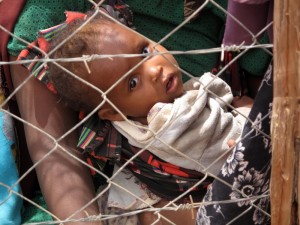
But, you may rightly point out, that is the MNIMUM wage. What’s the AVERAGE wage? Well, since you ask, it is considered to be around US$40,000, or about TWICE the Minimum Wage calculation figure [Note: UK average GDP/capita figure using ‘PPP’, is around $36k by comparison]. So, sticking with the multiplier of 10, shall we still imprison those earning US$400k per year or more? If so, you don’t want to be a film or pop star – any significant success will land them ALL behind bars!
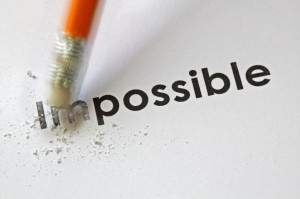
CAN CLEARER MINDS PREVAIL?
We hope that this light-hearted example makes the very SERIOUS point. Some people can and will earn more than ten times the AVERAGE income figure, even in more developed economies. The UK is considered one of the world’s top 5 economies (6th in 2012). Rich by both world and most people’s standards. Yet it is not so very unusual for some of the highest earners to make even 100 times the UK’s average personal income each year. Much (but we cannot guarantee all) of that will be via morally-neutral means.

So now back to you for a moment. What was the multiple YOU chose, beyond which you felt that the level of income being earned was somehow not morally ‘right’? In developed economies, people are NOT actually thrown into to the penal system for being high earners, but they ARE penalised. There is typically a penalty to pay for being a higher income earner – and it comes in the form of TAXATION.

TAXATION: A MORAL SURROGATE?
Taxation is itself a system with its flaws and holes, but it is intended to take more from higher earners to invest in services that all citizens can benefit from. Or alternatively, those taxes are used to reduce the overall tax burden on lower earners. In that way, lower earners are meant to SHARE in the overall benefit of the earnings of the higher earners, albeit indirectly. This is intended to be an attempt at ‘fairness’, in that those earning more, pay a greater portion of their highest levels of income in taxes.

In the UK for example, the current top income tax level is 45% of income above around US$250k per year. So almost half of all income above that point is meant to go in taxes. Hence, although the headline income figure can be high, the take-home income figure can be just above half of that. And it is the take home figure that counts – as that is the bit you can actually spend.
DRAWING A MORAL LINE
Drawing a ‘moral’ line at any given income point is potentially fraught with difficulties and ambiguities – not to mention a fair amount of hypocrisy. If one ‘caps’ citizen income per year at say 10 times the national average, then does 9.9 times still count as moral? Also, does that ‘moral compass’ extend beyond your national borders globally? For example, Somalia’s average GDP per capita is estimated at around US$600. Should we then cap international earnings at US$6000 – or even US$60,000, if we allow an upper limit multiple of 100 times the Somalian figure?
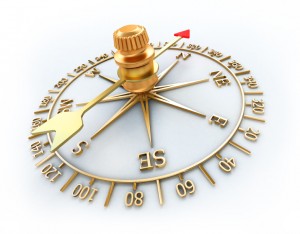
Our point is, if you decide it is IMMORAL for one person to earn 10, or even 100 times what the average income is in ONE country, why not extend that same principle to other less privileged countries all around you? Why should that level of DIFFERENCE in ‘wealth’ be immoral WITHIN a country, but not BETWEEN countries? Our view is that trying to claim that any AMOUNTS of relative ‘wealth’ creation is intrinsically immoral – is futile.
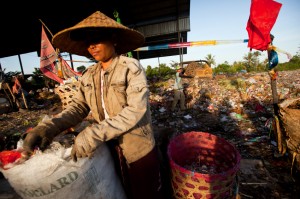
We see no obvious immoral amounts, just potentially immoral MEANS. Any moral focus is more fruitfully directed to what to DO with ‘wealth’ AFTER it has been accumulated. And when it comes to such MORAL arguments over ‘wealth’, we feel it is best if people FIRST try to ‘step into the other person’s shoes’. Before attempting to make any such judgements, you must first seek to imagine what YOU would be willing to do if you were in ‘their’ position. Because for SOME of the world’s ultra-poor, you ARE precisely in ‘their’ position.
ARE YOU TURNING HEADS IN THE GLOBAL ‘RICH LIST’?
We like to use the idea of the world’s 7 billion+ people, all ranked in ‘wealth’ order. The ‘wealthiest’ at the front of the queue (obviously), the ‘poorest’ at the back. Again, a reminder that we are choosing to use that very simplistic view of ‘wealth’, based on basic GDP/capita type figures. So where are you going to put yourself? Even among the so-called ‘middle-classes’ in more developed nations, there can be a tendency to look ‘ahead’ at those wealthier still, wondering why THEY are not doing more to help ‘the poor’.

Despite average annual wages in the UK of around US$40k per year, with a figure of almost 30 million in some kind of employment, those near the Minimum Wage will still tend to think of themselves as relatively poor. After all, the very phrase ‘minimum wage’ implies they are at the very bottom of the imaginary ‘pile’. But considered alongside the ‘average’ Somalian, perspectives can change. Could millions of Somalians be looking at the UK’s minimum wage earners and wondering why they are not doing more to overcome poverty for Somalians? After all, there are a LOT more of them than the UK’s richest elite.
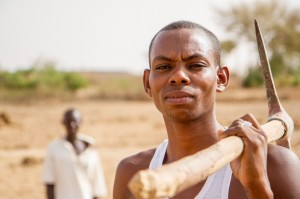
Yet those same UK minimum wagers are looking further up the notional queue, towards others in their own nation making a million dollars a year or more – with both envy and perhaps a sense of moral outrage. Who needs that kind of money anyway? Even people earning those millions could, with the same kind of forward-blinkered view, be looking at the world’s billionaires and wondering why THEY don’t do more. And so it could go on. When one person has a billion dollars and another has 50 times as much, even the former could believe the latter is the one who should be “doing more for the poor”. After all, THEY can afford it.

THINK YOURSELF RICH!
And so we return to the Poverty Gap that we believe will never be closed. There will always be DIFFERENCE in the wealth earned and owned between individuals. If you have difference, then some will always be ‘richer’, while others will always be ‘poorer’. In THAT sense, it is true: “The poor you will always have with you“, as Jesus is quoted as saying.
Our concern is that those best-placed to act against the worst extremes of poverty should be encouraged to do so. This does NOT mean the richest – but all those with the power, the opportunity and the inclination to act. THOSE are the people we hope to co-ordinate into a ‘coalition of the willing’.

Why spend ourselves and our energies trying to persuade a limited group of theoretical ‘OTHERS’ to act on closing a notional poverty gap, when WE are already (apparently) so fired up to take action OURSELVES? Better the few with a willing heart, in our view. That is more likely to build an enthusiastic momentum among the masses – a billion of us, we hope.
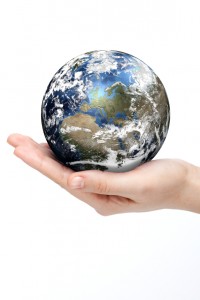
We regularly have visitors to this site from over 125 COUNTRIES, collectively representing over 90% of the world’s population – so you are already in good company. We welcome all those best-placed to act, among this coalition of the willing. Inform yourself – educate others. This is our way. The do-ers do. The don’t-ers don’t.
If a person is more closely bound to keeping a billion dollars they don’t need, than helping a billion people who can’t read – they have become poor in a way that you won’t find in any dictionary.
If you are one of the many globally who wants to be more effective in closing the extreme poverty gap – then we have higher hopes for you.
And we thank you again for being…
One in a Billion!

